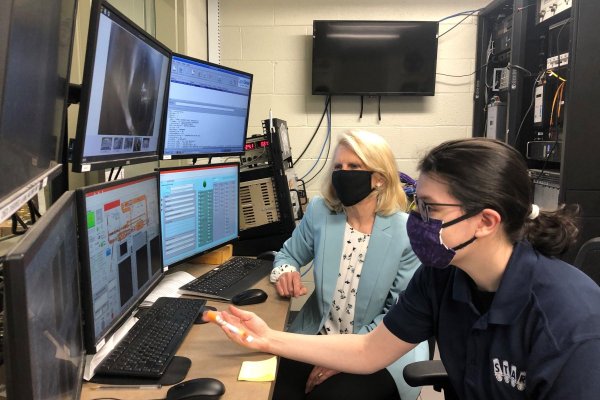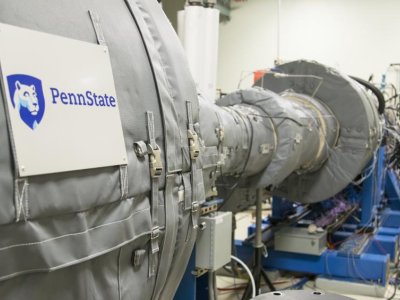Commercial aviation is responsible for between 2 and 2.5% of the total global CO2 emissions, with large single-aisle and twin-aisle aircraft responsible for 90% of those emissions. Recently, the chief technology officers of seven of the world’s aviation manufacturers jointly signed an agreement on a unified commitment to reduce commercial aviation emissions by half in 2050.
One method of reducing those emissions is high-efficiency turbines. The challenge? The temperatures needed to make these turbines highly efficient are far above the melting point for many of the components that make up today’s turbines.
The Steady Thermal Aero Research Turbine (START) Lab is advancing gas turbines by innovating cooling designs taken from fundamental theory and giving them real-world application. These designs are aimed at reducing the carbon footprint for aviation and power generation.
One viable solution for reducing the climate impact from the aviation industry is hybrid electric propulsion (HEP) especially suitable for large aircraft. HEP architectures use power not only from a gas turbine but from auxiliary, or outside, sources such as batteries. Because the power is augmented from an auxiliary source, the size and weight of the turbine can shrink.
However, START’s research is particularly important right now because as the turbine size decreases the turbine efficiency also decreases, leading to an offsetting of the intended goal of reducing CO2 emissions. These decreases in efficiency result from geometric turbine features that do not directly scale as the core size decreases.
Additionally, as features decrease in size, conventional manufacturing costs increase. The Penn State START Lab is leading a team with participants from Collins Aerospace, CVD MesoScribe Technologies, Georgia Tech, Howard University, and Pratt & Whitney with support from an $8 million NASA (National Aeronautics and Space Administration) University Leadership Initiative award to co-optimize turbine designs with hybrid electric propulsion systems. To assist with the cost challenge, the START team is integrating additive manufacturing into the latest development tools to advance turbine designs, which produces turbine blades in 75% less time. Next, through the additive manufacturing process, sensors and instrumentation are being used to measure in locations that were not possible before. Finally, the team is using machine learning to develop methods for condition-based maintenance.
To further accelerate turbine technology, particularly for power generation where there is a high emphasis on using hydrogen as the fuel, the U.S. Department of Energy is supporting the START research team to develop the first-ever National Experimental Turbine (NExT) through collaboration with Agilis, Solar Turbines, Siemens, Honeywell, and Pratt & Whitney. NExT will provide a testbed for the gas turbine manufacturers in which they can quickly and cheaply evaluate new designs.
With these new innovations in turbine technology and designs, Penn State researchers and their partners are revolutionizing air travel and power generation to make it cleaner and more energy-efficient.
About START Lab
In 2011, Pratt & Whitney and the Department of Energy came to Penn State in hopes of building a world-class test turbine facility. Through the support of both, the START Lab was built to advance turbine technologies. START includes a unique test turbine, which provides measurement capabilities that are at the center of advancing turbines and do not exist in any other facility worldwide, including turbine efficiency and spatially resolved temperatures on spinning, cooled, turbine blades. The facility also provides the opportunity for special, hands-on student learning experiences.





